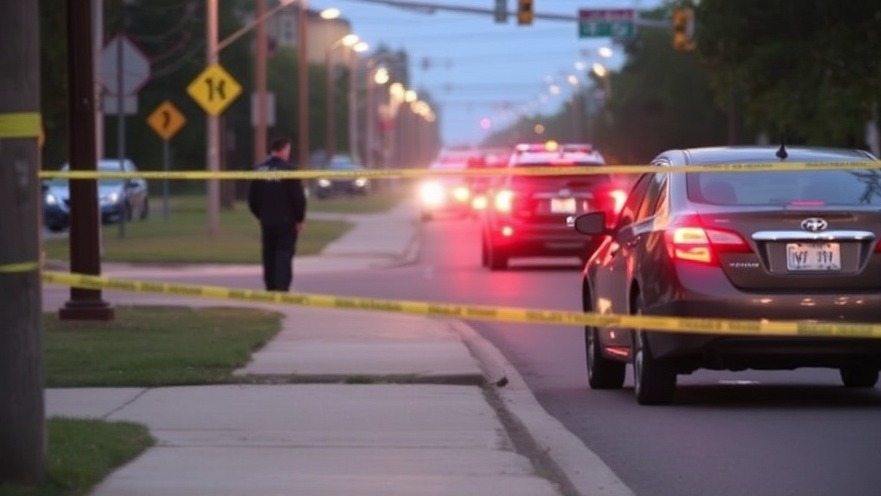
Tragic Traffic Fatality on Research Boulevard: What It Means for Austin's Road Safety
In a tragic incident that unfolded on May 25, 2025, a pedestrian was fatally struck by a vehicle in the 11000 block of Research Boulevard North Bound, marking a grim milestone for Austin as it accounted for the city's 37th fatal crash of the year. This accident, occurring just after 10:28 p.m., highlights escalating concerns about road safety in the rapidly growing city of Austin.
The Incident: A Stepping Stone Towards Awareness
According to the Austin Police Department (APD), the driver involved remained on the scene following the incident and was determined not to be impaired. The investigation is ongoing, but the early reports reveal a pressing issue. Fatal crashes like this one have been on an upward trend in Austin, with the year already recording 41 fatalities from traffic-related incidents this year – a notable increase from 32 deaths in the same period last year. This prompts the city to reassess traffic regulations, driver awareness, and urban planning measures.
Key Insights into Traffic Safety
Such accidents often spark conversations across communities about pedestrian safety and the efficacy of local infrastructure. Experts have called for an overhaul of Austin's traffic management policies to ensure safer road conditions. Measures might include better lighting at crosswalks, pedestrian zones, and dedicated bike lanes, all contributing to a holistic approach to urban mobility.
The Numbers Tell The Story
Statistics paint a sobering picture regarding traffic fatalities in the region. The rise from 31 fatal crashes in 2024 to 37 in 2025 raises alarms within local government and public safety initiatives. With the city experiencing hyper-growth and an influx of new residents, the accompanying traffic challenges must not be overlooked.
How the Community Can Respond
As citizens, it’s vital to engage in community organizing focused on promoting safe driving practices and pedestrian awareness. Initiatives could involve educational programs about the risks of distracted driving, alongside reinforcing the rights of pedestrians and cyclists on roadways. Moreover, community vigilance can assist local authorities in identifying hazardous intersections that require immediate attention.
The Broader Context: Austin's Road to Safety
This tragic event is not merely a statistic; it reflects broader societal issues related to urban planning and public safety infrastructure. With Austin undergoing rapid development, there is an urgent need to adapt our roadways for diverse modes of transport. Investment in infrastructure improvements emphasizes the commitment of city officials to create a safer environment for all road users.
A Call for Vigilance and Change
As the investigation continues, community members are encouraged to engage with the APD’s Vehicular Homicide Unit and provide any relevant information that might assist in the case. Traffic incidents affect us all, and raising awareness about these events is crucial for fostering a culture of safety in Austin.
Anyone who witnesses the incident or has information is urged to contact the APD at 512-974-8111 or reach out anonymously through the Capital Area Crime Stoppers Program. As members of this community, we can each play a part in enhancing safety across our roadways.
Looking Ahead: Future Predictions for Traffic Management
As tragic incidents underscore the importance of road safety, Austin could benefit from innovative traffic solutions. The implementation of smart city technologies, such as adaptive traffic signals and real-time monitoring systems, may assist in reducing accident rates and promoting safer streets.
Texas, known for its conservative and traditional views, must evolve its traffic regulations to match the modern needs of an increasingly complex urban environment. By addressing key factors such as increased population density and collaborative tactics, stakeholders can significantly affect the trajectory of traffic safety in Austin.
In light of these events, more civic engagement, awareness programs, and proactive measures from local government can help counter the current trends in traffic fatalities. The goal extends beyond merely adjusting statistics; it’s about preserving lives and fostering a culture where safety takes precedence on our city’s fast-paced urban roadways.
Such discussions on public safety and road use are essential, particularly as we look towards a future of sustainable and secure urban living.
 Add Element
Add Element  Add Row
Add Row 



 Add Row
Add Row  Add
Add 


Write A Comment